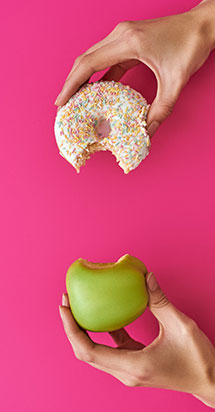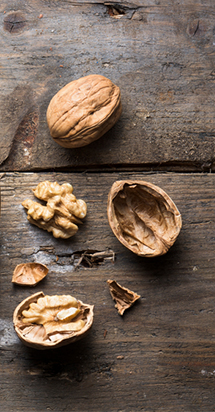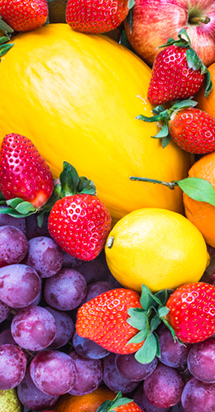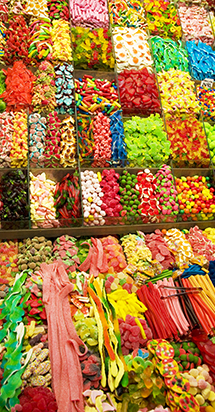Most of us consume more than the daily recommended intake of salt, increasing our risk of certain health problems and diseases. We look at the dangers of excessive salt in your diet and explore a few simple steps which can help you to cut your salt intake.
Too much salt can raise your blood pressure, which puts you at increased risk of health problems such as heart disease and stroke.
What is the recommended daily salt intake?
For adults:
The World Health Organisation (WHO) recommends that adults consume less than 5 g (just under a teaspoon or 2.2 g of sodium) of salt per day.
For children:
WHO recommends that the recommended maximum intake of salt for adults be adjusted downward for children aged two to 15 years based on their energy requirements relative to those of adults.
This recommendation for children does not address the period of exclusive breastfeeding (0–6 months) or the period of complementary feeding with continued breastfeeding (6–24 months).
Babies under a year old should have less than 1g of salt daily. Babies will get adequate amounts of minerals, including sodium and chloride, from breast or formula milk.
Ensuring your child doesn’t eat too much salt can also mean they don’t develop a taste for salty food. Making them less likely to eat too much salt as an adult.
DID YOU KNOW?
Children who have a high salt diet are twice as likely to develop high blood pressure as children who have low salt diets.
This recommendation for children does not address the period of exclusive breastfeeding (0–6 months) or the period of complementary feeding with continued breastfeeding (6–24 months).
Babies under a year old should have less than 1g of salt daily. Babies will get adequate amounts of minerals, including sodium and chloride, from breast or formula milk.
Ensuring your child doesn’t eat too much salt can also mean they don’t develop a taste for salty food. Making them less likely to eat too much salt as an adult.
DID YOU KNOW?
Children who have a high salt diet are twice as likely to develop high blood pressure as children who have low salt diets.
Salt and Sodium
Salt and sodium are often used interchangeably, but they’re not the same. Sodium is a mineral which may occur naturally in foods or be added during manufacturing.
Salt is a combination of sodium and chloride. By weight, it is about 40 percent sodium and 60 percent chloride.
The nutritional information on food labels may only give the figure for sodium, therefore it important to know that:
Salt = Sodium x 2.5
Approximate levels of sodium per teaspoon of salt:
1/4 teaspoon salt = 575 mg sodium
1/2 teaspoon salt = 1,150 mg sodium
3/4 teaspoon salt = 1,725 mg sodium
1 teaspoon salt = 2,300 mg sodium
1/2 teaspoon salt = 1,150 mg sodium
3/4 teaspoon salt = 1,725 mg sodium
1 teaspoon salt = 2,300 mg sodium
Salt and Your Health
Globally the average salt intake ranges from 9 to 12 grams per day. Contributing to a global epidemic of blood pressure related and other diseases:
Blood Pressure
Blood pressure is the amount of pressure that blood puts on your blood vessel walls as it is pumped around the body. A high salt diet can raise blood pressure, the major factor which causes strokes, heart failure and heart attacks, leading causes of death and disability globally.
Stroke
During a stroke blood supply to the brain is cut off, reducing oxygen flow, causing cells to die.
High blood pressure is a major risk factor for stroke and salt is the major factor that raises blood pressure.
High blood pressure is a major risk factor for stroke and salt is the major factor that raises blood pressure.
Coronary Heart Disease (CHD)
CHD is when the heart’s blood supply is reduced or blocked leading to heart failure and heart attacks.
Raised blood pressure is a major risk factor for CHD and salt raises blood pressure.
Raised blood pressure is a major risk factor for CHD and salt raises blood pressure.
Stomach Cancer
The bacterium Helicobacter pylori (H. pylori) is the major risk factor for stomach cancer.
Salt can damage the lining of the stomach, making it vulnerable to the effects of H.pylori, and salt may also increase the growth and action of the bacterium making it more likely to cause damage.
Salt can damage the lining of the stomach, making it vulnerable to the effects of H.pylori, and salt may also increase the growth and action of the bacterium making it more likely to cause damage.
Osteoporosis
Osteoporosis is a condition which causes thinning of bones, making them brittle and prone to breaking.
A high salt diet can cause calcium to be lost from bones and excreted in the urine, making bones. High blood pressure caused by a high salt diet can speed up the loss of calcium from bones, worsening the problem.
A high salt diet can cause calcium to be lost from bones and excreted in the urine, making bones. High blood pressure caused by a high salt diet can speed up the loss of calcium from bones, worsening the problem.
Kidney Disease
A high salt intake and high blood pressure can cause too much calcium to be excreted by the kidneys into the urine, leading to a build-up of calcium and cause kidney stones.
A high salt diet can also disrupt the function of the kidneys and cause high blood pressure, this in turn puts a strain on the kidneys leading to kidney disease.
A high salt diet can also disrupt the function of the kidneys and cause high blood pressure, this in turn puts a strain on the kidneys leading to kidney disease.
Where is all the salt coming from?
More than 75% of the sodium we eat comes from processed and restaurant foods, making it difficult to choose lower sodium foods and to limit sodium, as it’s already added to food before we buy it.
15% of the sodium in our diets occurs naturally in food and the remaining 10% is added to food by us either during cooking or when sitting down to eat.
15% of the sodium in our diets occurs naturally in food and the remaining 10% is added to food by us either during cooking or when sitting down to eat.
3 Tips for reducing salt intake
Tip 1: When shopping check labels for sodium content..
To really cut down on salt, you need to become aware of the salt that is already in the everyday foods you buy, and choose lower-salt options.
Nutrition labels on food packaging make this easy, as most pre-packed foods have a nutrition label on the back or side of the packaging.
By comparing nutrition labels on food packaging when buying everyday items, you can dramatically cut your salt intake by choosing the lower in salt foods.
As a rule, aim for foods that have a low or medium salt content. Try to have high-salt foods only occasionally, or in small amounts.
Nutrition labels on food packaging make this easy, as most pre-packed foods have a nutrition label on the back or side of the packaging.
By comparing nutrition labels on food packaging when buying everyday items, you can dramatically cut your salt intake by choosing the lower in salt foods.
As a rule, aim for foods that have a low or medium salt content. Try to have high-salt foods only occasionally, or in small amounts.
Comparing labels
Study the figure for salt per 100g:
High salt content is more than 1.5g salt (0.6g sodium) per 100g.
Low is 0.3g salt (0.1g sodium) or less per 100g.
If the amount of salt per 100g is between 0.3g and 1.5g, that may be considered a medium level of salt.
High salt content is more than 1.5g salt (0.6g sodium) per 100g.
Low is 0.3g salt (0.1g sodium) or less per 100g.
If the amount of salt per 100g is between 0.3g and 1.5g, that may be considered a medium level of salt.
Tip 2: Know which foods are high in salt..
Knowing which foods are high in salt can help you avoid them and choose healthier alternatives.
Try to avoid processed foods including packaged meats which are usually preserved with salt and other chemical preservatives that can cause health problems.
Eat a diet high in fresh fruit, vegetables and wholegrains. If buying frozen vegetables, ensure they don’t contain seasoning or other sauces containing salt.
If you are going to have crisps, chips or crackers, check the label and choose the ones lower in salt. Don't forget to check the fat and sugars content, too.
Try to avoid processed foods including packaged meats which are usually preserved with salt and other chemical preservatives that can cause health problems.
Eat a diet high in fresh fruit, vegetables and wholegrains. If buying frozen vegetables, ensure they don’t contain seasoning or other sauces containing salt.
If you are going to have crisps, chips or crackers, check the label and choose the ones lower in salt. Don't forget to check the fat and sugars content, too.
Common high salt foods:
- Bacon
- Bread
- Cheese
- Gravy granules
- Ham
- Olives
- Pickles
- Prawns
- Salami
- Salted and dry-roasted nuts
- Smoked meat and fish
- Soy sauce
- Stock cubes
- Yeast extract
Tip 3: Use less salt when cooking and eating..
Whether you're eating at home, cooking or eating out, don't add salt to your food automatically – taste it first. Many people add salt out of habit, but it's often unnecessary and your food will taste good without it.
When seasoning, use black pepper, fresh herbs and spices instead of salt. Try making your own stock and gravy instead of using cubes or granules, or shop for reduced salt options.
Make sauces with fresh ingredients such as ripe tomatoes and garlic. Try baking or roasting vegetables such as red peppers, tomatoes, courgettes, fennel, parsnips and squash to bring out their flavour.
Remember, simple changes to your diet and how you shop for food, can reduce salt intake and lower your risk of developing health problems.
DID YOU KNOW?
An estimated 2.5 million deaths could be prevented each year if global salt consumption were reduced to the recommended level.
When seasoning, use black pepper, fresh herbs and spices instead of salt. Try making your own stock and gravy instead of using cubes or granules, or shop for reduced salt options.
Make sauces with fresh ingredients such as ripe tomatoes and garlic. Try baking or roasting vegetables such as red peppers, tomatoes, courgettes, fennel, parsnips and squash to bring out their flavour.
Remember, simple changes to your diet and how you shop for food, can reduce salt intake and lower your risk of developing health problems.
DID YOU KNOW?
An estimated 2.5 million deaths could be prevented each year if global salt consumption were reduced to the recommended level.
Sea salt, table salt and kosher salt
It is a common misconception that sea salt contains less sodium than table salt.
Sea salt and kosher salt have boomed in popularity in restaurants and supermarket aisles. Many gourmet chefs say they prefer it over table salt for its coarse, crunchy texture and stronger flavour.
But table salt, kosher salt and most sea salts all contain about 40% sodium by weight. Even though sea salt may have some trace levels of minerals like magnesium, potassium and calcium, the amounts are tiny and you can get them from other healthy foods.
Some varieties of sea salt may claim to have less sodium than table salt. Check the nutrition label to compare how a sea salt compares to table salt.
If you are consuming more sea salt than you otherwise would because you think it has less sodium.
Then you may be placing yourself at higher risk of developing high blood pressure, raising your risk of heart disease.
Sea salt and kosher salt have boomed in popularity in restaurants and supermarket aisles. Many gourmet chefs say they prefer it over table salt for its coarse, crunchy texture and stronger flavour.
But table salt, kosher salt and most sea salts all contain about 40% sodium by weight. Even though sea salt may have some trace levels of minerals like magnesium, potassium and calcium, the amounts are tiny and you can get them from other healthy foods.
Some varieties of sea salt may claim to have less sodium than table salt. Check the nutrition label to compare how a sea salt compares to table salt.
If you are consuming more sea salt than you otherwise would because you think it has less sodium.
Then you may be placing yourself at higher risk of developing high blood pressure, raising your risk of heart disease.
Your International insurance cover
“While primary prevention of excessive salt intake is the gold standard – I would also like to point towards the importance of salt restriction in already established cases of Hypertension, Heart insufficiency and Chronic Kidney disease. This is called “secondary prevention” – as it aims at avoiding worsening and complications of these conditions that could result in death. AWC’s insured members enjoy the advantage of being fully covered for consultations with specialised Physicians to assist and guide on a healthy diet and lifestyle.” Dr Ulrike Sucher, Medical Director, Allianz Worldwide Care.
Why not start controlling your salt intake today.
Why not start controlling your salt intake today.
Allianz Worldwide Care
If you are living or working overseas and require international health insurance, contact Allianz Worldwide Care for a quote.
Get an individual international health insurance quote or more information on group international health insurance, online now.
Get an individual international health insurance quote or more information on group international health insurance, online now.













